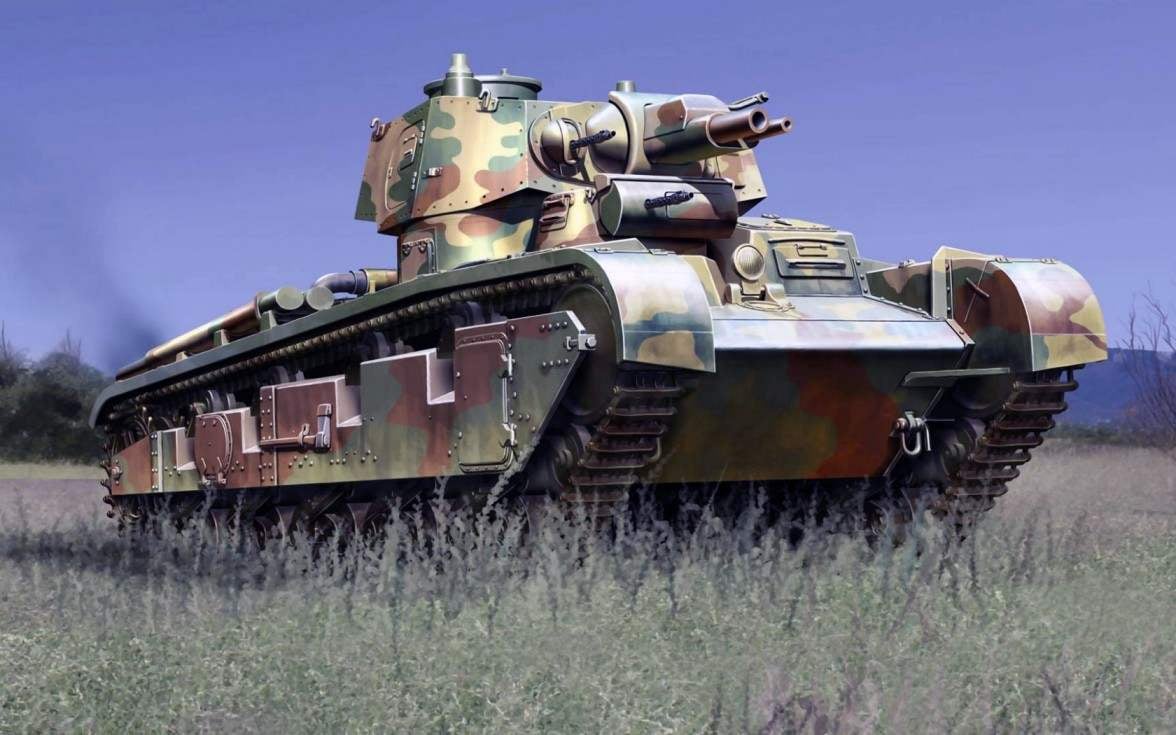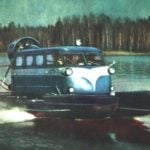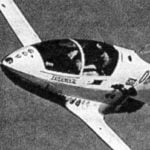
 The first phase of the German tank building is well known to the reader — it covers the period of the First world war ends 1918. In the description of subsequent phases usually just jump in 1933 in Nazi Germany Might get the impression that between 1918 and 1933 the Germans were not engaged tanks. However, they do the job, the Treaty of Versailles prohibited, just not advertise it. It was in those years was created by a “gross-tractor” — the most interesting of the German war machine 1920-ies.
The first phase of the German tank building is well known to the reader — it covers the period of the First world war ends 1918. In the description of subsequent phases usually just jump in 1933 in Nazi Germany Might get the impression that between 1918 and 1933 the Germans were not engaged tanks. However, they do the job, the Treaty of Versailles prohibited, just not advertise it. It was in those years was created by a “gross-tractor” — the most interesting of the German war machine 1920-ies.
“Grosstraktor” combines features of both tanks of the First world war with their characteristic high crawler rim and new elements such as tower placement of weapons. Having a large test cycle, “Grosstraktor” was well-developed. So when, after Hitler came to power the Versailles restrictions were dropped, one of the tanks for the recovering of armored forces, Germany has decided to do based on it. But new developments in tank forced to make so many changes from the original “Grosstraktor” almost nothing left, and the design and concept of the new tank had to work again.
In those years it was a common theory is the so-called “masters of all trades” tank, able to perform on the battlefield many functions. A classic representative of such machines became a Soviet T-35. Machine-gun towers placed on the right and left sides provided the “cleansing of the trenches”, two 45-mm cannon in the middle of the towers, fighting enemy tanks, 76-mm gun in the main tower — the suppression of field fortifications.
When designing your sample towered the Germans tried to avoid the main disadvantage of T-35 — the excessive number of towers. In his tank they decided to place one artillery tower, but with dual installation of the 37 – and 75-mm guns. The commander could choose one goal, but depending on her character to fire from a cannon. But the machine guns in the turrets could fire simultaneously and independently from each other.


Medium tank Nb.Fz.:
1 — the main tower; 2 — front machine gun turret; 3 — rear machine gun turret; 4 — commander’s cupola; 5 — side door of the tower; 6 — driving wheel; 7 — cart suspension; 8 — supporting the roll; 9 — landing door; 10 — guide wheel; 11 — MG13 machine guns; 12 — landing driver’s hatch; 13 — 75-mm gun; 14 — 37-mm gun; 15 — mufflers; 16 — cap over the hatch air ejection; 17 — installation coaxial machine gun; 18 — cover the loopholes of the sight; 19 light; 20 — an access hatch to the powertrain
The developers have taken all possible measures to reduce the weight and dimensions of the tank. As a result, his arrangement began to resemble more of the late Soviet project of SMK (with three towers). In the bow on the left is driver, right — gunner in the small turret. In the middle part of the hull was the main tower with the spark of guns, gunner, loader and commander. Behind her on the left is another small machine gun turret, and the right engine. The feed block was occupied by the transmission.
The chassis inherited from the “Grosstraktor” only got thrust roller placed between the idler and first bogie and suspension designed to eliminate the deflection of the tracks when moving through a large vertical obstacles. Because of its high crawler rim “Grosstraktor” had two thrust rollers on each track; there was a video and in the design of the chassis of the Soviet T-35.
In the rest of the chassis of the new tank was designed from scratch and included five bogies bogie wheels on each side, independent on the beam spring suspension, Such suspension provided a very high smoothness.
The draft has satisfied the military, and the firm “Rheinmetall” received the order for the production of unarmored prototype under the symbol Nb.Fz. In 1933 his first sample was tested on. In the course of their quickly became clear that the tank has too many flaws.
The main criticism of the main tower. It turned out that the vertically placed coaxial gun is inconvenient to charge especially a 37-mm This process is interfered with and the commander who were too close to the breech portions of the guns in the rear of the turret (which enabled him, however, an excellent overview). And charging, in addition to maintenance of guns, should have to and shooting from a machine gun MG13, placed in the ledge of the tower to the right of the guns. Tests have shown that in battle he can only do one thing: to shoot a gun, or charge the gun.

With the hatches on the side walls of the tower, too, was not all right. The designers fulfilled the type of “gross-tractor” — the opening ago but did not realize that “Grosstraktor” the hatches were in the stern, and the evacuation through them of the crew in combat, it protected the tower. And Nb.Fz. in the rear of the turret was a niche to embed the radio station, where he worked for the commander, so the hatches were moved to the side, and coming under fire from a tank, the crew became helpless. Have enough problems with the chassis: the first prototype tested two designs of bogie suspension; equipment variant with five trucks on both sides was the most successful.
Structurally underdeveloped was the mount of the front portions of the wings to the screens chassis: I wasnt able to change the tracks. Finally, a large casing for discharge of air in the feed tank, the restricted rear arc of fire left gun tower.
To accelerate design work on a new prototype it was decided to “delimit” them: “Rheinmetall” was responsible only for the hull, and new turret with armament did the firm “Krupp”. In 1934, a second unarmored prototype was ready. The main difference was the new main tower, to accelerate the production gathered on the bolts. The tower has become more technologically advanced and had in its design of bent leaves an Interesting detail: in order to circumvent the small tower on the front of a big tower made distinctive reverse bevel. Then these bevels has moved onto the Pz.III and Pz.IV (and with Pz.III — and on the first T-34), but as a means of improving sharedetails corps.
Guns in the tower were placed horizontally, that is created, however, when the asymmetrical load shot on her epaulet. But charging began to work, he was spared from the firing of a machine gun mounted in the front armor plate of the tower. The gun is mechanically connected with the spark of guns and the aiming is carried out now by the gunner.
It was difficult to move the commander from the state-owned parts of the guns. This required increasing the diameter of the turret, and therefore alterations of the body. In the end, decided to just increase the size of the rear bin, on the bottom which housed the commander, his legs dangling inside of the ring. The commander’s cupola received a double hatch. Side turret hatches began to open forward in the direction of movement of the tank. This solution is then moved to the tower Pz.III and Pz.IV.
Increase aft the niche of the main tower solved the problem of accommodation of the commander, but required rework of small towers. To standout in the aft overhang was held over them, had to reduce their height by giving up the sloping roof. New hatches strongly pushed forward. Now aft the niche of the main tower at any position couldn’t jam, but to get the gunners became somewhat uncomfortable.

Accommodation options tool and form hinges for folding parts of the wings on production cars
The body also has some changes. Hood exhaust air at the rear of the machine moved to starboard to increase the feed sector of the fire tower. Changed the location of the attenuators and redid the mounting of the wings in the bow.
The shovel and axe moved from the wings on the side screens as the “Grosstraktor”. It was believed that this would facilitate the crew to use tools, but actually led to his loss at movement on rough terrain (this decision was later abandoned). In General, the conducted refinement has improved the reliability of the machine, and the military ordered another three now armored prototype. In 1935, these tanks were made. They are made brings new changes, and the car was noticeably different from both unarmored prototypes. Slightly different tanks and with each other.
New main tower was welded, with the exception of the mounting of tower overhead, uncovered riveted. The bottom of the rear bin was modified to better accommodate the commander, who received a new commander’s cupola. Unlike the German medium tanks, the commander on all Nb.Fz. performed the functions of a radio operator. Antenna the first prototype was porucnika, and the rest of the 4-meter whip, sabaliauskas forward to the frontal part of the tower
Small tower made according to the type of towers light tank Pz.I developed by “Krupp”. New niches form a great tower allowed once again to increase their height. Of the four observation hatches in the sides of the tower, there are only two because the other two were uncomfortable to use. The Germans finally found a satisfactory solution to the hatch of the small tower, making it double and large in size, that provide convenience and output of the tanker, and protect him from the bullets.
Mask gun was made the type of mask Pz.I. This gave rise to the legend that they both have tanks and machine gun turrets are identical. In fact Nb.Fz. she was much smaller, so it is not true and another legend — about the installation in the tower Sparky MG34. For the gunner and two machine guns it didn’t have the space.
Corps armored tanks almost did not differ from those of the second prototype. Mufflers re-posted on the wings of the tank, adding another, small in size. The shovel and axe again moved to the wings in the front part, next to the keys for track tensioning And two tanks on the outer sides of the wings housed the shovel and axe, and the inside of the keys. One tank it was the opposite — the keys were outside, and the axe and shovel inside.
Differed from the tanks and front mount folding of the wings. One of the wings had a single wide loop, and the other two small. All of Nb.Fz. the wings were fitted with tilting mechanism. It was believed that the non-combat wings will be omitted, and in battle — tilted not to impede the crossing of obstacles. In reality, the folding parts still broke.
At the end of 1935, all three armored Nb.Fz. have been tested, showing very satisfactory results. But time was already missed. If at the end or even the beginning of 1934, the tank still had a chance to run a small series, at the end of the 1935 approach was already Pz.III and Pz.IV and, most importantly, we have developed the strategy of blitzkrieg, which designed the new tanks of the Wehrmacht. Nb.Fz., created based on the theory of the use of tanks 1920-ies, it became unpromising. The fate of the five built Nb.Fz., seemed to be solved — transfer to training units and quiet oblivion. But their life took a new turn.

The second prototype tank Nb.Fz. in camouflage color as 1938

Tank serial Nb.Fz. from the composition of the 40-th separate tank battalion (Pz.Abt.z.b.V.40). Norway, 1940
In ominous atmosphere of the late 1930-ies already clearly felt the approaching war. In addition to the hectic prepare, many European countries have devoted significant place to deceive the enemy, and simply attempts his intimidation.
Then at court came and Nb.Fz. Three armored tank decided to use during the occupation of Norway. Mainly for demonstrative actions on the streets of Oslo. Tanks took a lot of pictures to create the impression of mass-production and application that was quite successful: “Rheinmetall” was included in all tank guides in the world. At the same time it was reported and its fantastic performance characteristics. That misinformation was revealed one of the Nb.Fz., mired in a swamp, when there was danger of his capture by the British, was quickly blown up. The photograph shows that the explosives did not regret — after all, fetch a enemy tank — with the legend of his outstanding fighting qualities would be over.
Being used and remaining in Germany the first prototype. Given the significant difference in appearance from the later machines, it was decided to issue for their further development, like the spark of an armed 37 – and 105-mm guns. Pictures of him supposedly on the Assembly line, bypassed Newspapers around the world. These photos and know quite a lot but if you look closely at them shows that they are one and the same tank photographed from different angles. In fact, the images show the repair, and it is possible — and the dismantling of the first prototype.
But on these photos you can see what changes were made in the tank before sending it to the training unit. With the machine removed porechniy the antenna and performed the attachment of the front parts of the wings as the next tanks, removing their connections to the screens. Lost the car and reclining the front parts of the wings.
Documents or photos that shed light on the fate of the tanks Nb.Fz., not yet discovered. There may be only assumptions. Tanks could end his existence in the educational parts. However, even sending armored vehicles to the Eastern front can not be denied.
V. MALGINOV



